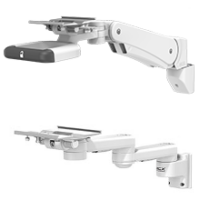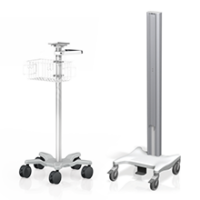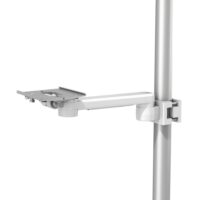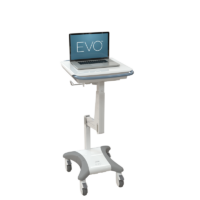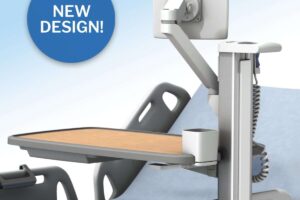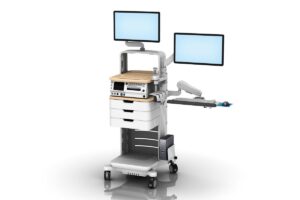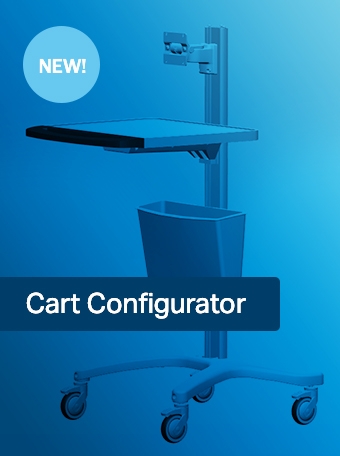
-
Solutions
Solutions pour l'espace de soins
Standardisez les solutions de montage GCX dans l'ensemble de votre établissement de santé.
Solutions informatiques et DME
Solutions de montage pour les équipements de technologie de l'information et de dossiers médicaux électroniques.
Solutions de montage en fonction de votre emplacement.
Solutions pour les dispositifs médicaux
Solutions de montage conçues spécifiquement pour vos appareils médicaux et de surveillance des patients.
-
Produits
Accessoires
- 10 x 25 mm Rails
- Blocs multiprises de qualité médicale
- Boîtiers montables pour tablettes
- Canaux
- Gestion des câbles
- Intégration des tablettes
- Modules de charge USB
- Montage de la coupelle de la sonde
- Paniers et bacs
- Plaques d’adaptation VESA
- Plaques et plateaux pour clavier
- Plateaux
- Poignées
- Postes en bas
- Support pour bouteille de gel
- Supports de caméra
- Supports PolyQuip® pour poteaux et sacs I.V.
- Supports pour blocs d’alimentation
- Supports pour bouteilles de gaz
- Supports pour dispositifs de capture de données
- Supports pour lecteurs de codes-barres
- Supports pour onduleurs
- Supports pour UC
- Tiroirs
-
Services OEM
Les solutions de montage pour les partenaires OEM de dispositifs médicaux vont des produits prêts à l'emploi aux produits entièrement personnalisés.
Approche
Modalités
- Autres modalités
- Ventilation
- Échographie
- Suivi des patients
- Télémédecine
- Navigation chirurgicale
- Solutions ECG
Notre expertise
-
Soutien
Support technique
Contactez notre équipe d'assistance ou consultez la documentation pertinente sur le produit.
-
À propos de GCX
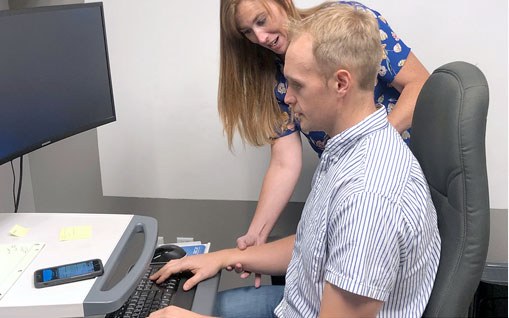
October is Ergonomics Month, which is a great time to share insights from Nikki Grose-Grow, a certified ergonomic assessment specialist at Sierra Nevada Ergonomics. Nikki is specially trained to evaluate hospital environments and is the ergonomist for northern Nevada’s largest healthcare system.
As industries go, are healthcare practitioners more or less likely to suffer serious, even debilitating, injuries due to poor ergonomic office or patient room equipment?
It depends on their role. For instance, ultrasound techs have one of the highest incidents of work-related injury due to the awkward positions they have to be in. Obviously, anyone that’s transferring patients, such as nurses and CNAs, also are at a higher risk.
Doctors and some other practitioners who spend a fair amount of time documenting are a lot more aware of their bodies and how to position them. They also are more likely to reach out if they are experiencing discomfort, such as in their back or wrist, and ask for a more ergonomic piece of equipment.
How receptive are today’s hospitals in fulfilling a practitioners’ request for ergonomic equipment?
It’s always going to be budget-dependent. When I’m brought in to evaluate a hospital’s employees, one of the biggest issues I see is that some departments have generous budgets, and some don’t. This impacts how much of my recommendations for new equipment a department is able to fulfill.
Can you talk about how today’s healthcare technologies, such as those associated with EMRs, impact the risk of work-related injuries?
Basically, there are three main risk factors that impact hospital employees: repetition; contact stress; and awkward postures.
Repetition is any time you’re repeating a movement. Ultrasounds are a good example. The technologies are great, but they require techs to constantly click or move a mouse to freeze an image or increase the sizing to make sure it’s correct. Then there’s the constant repositioning of the wand, which is a huge issue.
We don’t chart as often using paper and pencil, so sometimes doctors are spending three or four hours at the end of shifts trying to catch up on their notes. They’re holding dictation devices without a dictation stand or are at a standard employee desk or mobile workstation to log notes into a computer. If a keyboard is not at the optimal level, they will have to sit higher in their chair, which causes awkward pelvic titling and back arching, or hunch their shoulders, which causes pressure in the lower back. The longer you sit like that, the higher the risks of repetition injuries there are.
The other prevalent risk factor in healthcare is awkward postures or positioning, where you’re working with the back, neck or wrists bent or twisted for more than two hours per day. This can be seen in various medical care tasks but is most often seen in jobs that require computer use, use of scanning and/or printer equipment where you’re twisting.
It’s not uncommon for someone to have dual issues: both repetition and awkward positioning. Anytime we’re out of neutral positioning, the risk of injury goes up. Every single body part has a neutral position for sitting and standing, and ergonomics really focuses on maximizing the amount of time we can spend in our neutral positioning.
In what ways do medical mounting solutions help to mitigate these risks associated with repetition and awkward positioning?
With repetition, you want to try to reduce the amount of time you spend doing something repetitious. The more time spent doing tasks in neutral positioning, the less likely you are to suffer from repetition.
With awkward positioning, it’s all about getting in a neutral position. Anytime you can adjust mounting equipment to each user, it’s ideal. The mounting solution needs to be adjustable to work with different heights, arm lengths, torso lengths, and so on. Every single little difference in someone’s body comes into play, even if two people are the same height. So mounting solutions really have to be adjustable for them to work for multiple users.
In the medical industry, we have a lot of turnover or a lot of times where people are using multiple-user workstations. For instance, at a nurse charge station, you might have five or six nurses using the same workstation, so a mounting solution that allows for that flexibility of movement is the best way to deal with awkward positioning. It’s a really critical part of it, actually.
What are some of the biggest benefits of hospitals using ergonomic equipment?
A significant benefit is the reduction in the rate of injuries from being proactive instead of reactive. Hospitals can reduce their worker’s compensation premiums as well as indirect costs, such as lost employee time due to them being unable to work. That also can impact the quality of care if existing staff must take on more patients while someone is out.
GCX designs its products with healthcare ergonomics in mind. For instance, our mounting arms, whether attached to a wall, floor or rolling stand, can be adjusted to fit each user and promote optimal positioning. We understand the importance of ergonomics in helping our customers reduce worker injuries and associated costs.
Recent Blog Posts
- Bring IT décembre 13, 2023
- Everything within Arm’s Reach: Fetal Monitoring Workstations Nurses Love août 11, 2023
- Ready to Move on from Wooden Carts? mai 16, 2023
- A GCX Superpower: Knowing How to Save You Time janvier 19, 2023
- Configuring Anesthesia Workstations for Safe, Long-Term Usage novembre 8, 2022




















